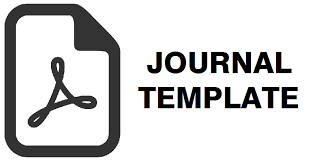Towards Sustainable Solutions: Educational Challenges Among Forcibly Displaced Students Up To Junior High School
DOI:
https://doi.org/10.35719/hrtg.v4i2.115Keywords:
Forced Displacement, Education Solutions, Sustainable Development Goal 4, Global Collaboration, Inclusive PoliciesAbstract
This article presents a comprehensive study of the educational challenges faced by forcibly displaced students, comprising refugees, migrants, and asylum seekers, up to the junior high school level. It underscores the pivotal role of education, not only as a fundamental right but also as a catalyst for economic growth and community integration amidst the escalating global forced displacement. Advocating for a shift from short-term humanitarian responses to long-term development approaches, the article calls for sustainable funding, inclusive national education systems, and diverse educational solutions. Utilizing a comprehensive methodology that integrates statistics, policy analysis, case studies, and real-life examples, the study illuminates the evolving policy landscape, recognizing the transition towards development-oriented approaches and inclusive policies. Critical components in addressing these challenges include global collaboration, innovation, and data availability, along with notable initiatives by organizations such as UNHCR, the World Bank, and the Global Partnership for Education. The conclusion emphasizes the urgency of developing evidence-based policies and intervention strategies to overcome barriers faced by forcibly displaced students up to the junior high school level by prioritizing inclusive practices, removing barriers, and investing in post-primary education to break the cycle of displacement, aligning with Sustainable Development Goal 4 for an inclusive and better future.
References
Anderson, B. (1983). Imagined communities. Verso.
World Bank. (2020). World Bank Group Strategy for Fragility, Conflict and Violence 2020 – 2025.
Chovpan, G. (2023). How Various Adaptation Schemes in the Education Systems of European Countries Affect the Inclusion of Refugee Children from Ukraine in Their Educational System. Research Square. https://doi.org/10.21203/rs.3.rs-2581955/v2.
European Commision. (2023). EU Support to Refugees in Turkey.
Conference, E. H.-L. F. (2023). With Hope and Courage: Education Cannot Wait Calls on World Leaders to Step Up and Close the Funding Gap to Deliver on Promises of Education for All.
Gilsätter, B. (2019). World Bank and UNHCR: Using Open Data to Drive Evidence-based Responses to Support Refugees and Their Hosts.
Harris, M. (n.d.). Grades improve if classes start later, studies find. The Calgary Herald. http://www.calgaryherald.com/
Hawari, M. (2023). Socio-economic Situation of Refugees in Jordan Q2 2023. UNHCR Jordan.
Hoogeveen, J., & Pape, U. (2020). Data collection in fragile states – innovations from Africa and beyond. World Bank.
IDAC. (2023). Improving Data, Upholding Rights: A Partnership to Protect Migrant and Displaced Children. Annual Report of the International Data Alliance for Children on the Move.
Kusumaningrum, D. (2016). Interdependence versus truth and justice: lessons from reconciliation processes in Maluku. Jurnal Ilmu Sosial Dan Ilmu Politik, 20(1), 15. https://doi.org/doi: 10.22146/jsp.17998
Lee, K. (2004). Reading and learning strategies: recommendations for the 21st century. Journal of Developmental Education, 28(2), 2-15.
Mancusa, S., & Viola, A. (2015). Brilliant green: the surprising history and science of plant intelligence (J. Benham, Trans.). Island Press.
McConnell, A. (2023). Data and Statistics, Mid-Year Trends, Statistics and Demographics Section UNHCR Global Data Service. UNHCR.
United Nations. (2018). Global Compact on Refugees.
Piper, B., Dryden-Peterson, S., Chopra, V., Reddick, C., & Oyanga, A. (2020). Are Refugee Children Learning? Early Grade Literacy in a Refugee Camp in Kenya,. Journal on Education in Emergencie, 5(2), 71-107.
Psacharopoulos, G., & Patrinos, H. (2018). Returns to Investment in Education – a Decennial Review of the Global Literature. (No. 8402).
Report, G. E. M. (2019). Migration, Displacement and Education: Building Bridges, Not Walls. UNICEF.
Smith, F. M., & Jones, W. (2004). The college student. In C. Wood & M. Meyer (Eds.), Cross-cultural education (pp. 75-105). London. MacMillan.
Smith, G. (2012). Barthes on Jamie: Myth and the TV revolutionary. Journal of Media Practice, 13, 3–17. https://doi.org/doi: 10.1386/jmpr.13.1.3_1
South Sudan Education Cluster Dashboard – January-December 2022. (2023). Education Cluster, UNICEF.
Buzan, T. (2007). Mind maps. September 3, 2009. http://www.buzanworld.com/Mind_Maps.html.Buzan T. (2007). Mind maps. September 3, 2009, retrieved from http://www.buzanworld.com/Mind_Maps.html.
Tammi, A.-M., Secretariat, G., & Bouvier, M. L. (2023). 5 examples of GPE support to refugee education.
TransCanada. (2006). TransCanada. (2006). Annual report. Retrieved. http://www.transcanada.com/investor/annual_reports/2006/media/pdf/TransCanada_2006_ Annual_Report.pdf
Uganda Govt., & UNHCR. (2023). Uganda Refugee Response Plan (RRP) 2022 - 2023, Education Dashboard - Term 1.
UNHCR. (2019a). Refugee Education 2030 – A Strategy for Refugee Inclusion.
UNHCR. (2019b). Uganda Country Refugee Response Plan 2019 – 2020. UNHCR.
UNHCR. (2020a). Coming Together for Refugee Education. Gross Enrollment Figures are Based on Data from 12 Countries that Host More Than Half of the 20.4 Million Refugees under UNHCR’s Mandate.
UNHCR. (2020b). Global Trends: Forced Displacement in 2019. http://www.unhcr.org/refugee-statistics.
UNHCR. (2020c). Global Trends – Forced Displacement in 2019.
UNHCR. (2020d). Oral Update on the Global Programmes. Seventy-seventh Meeting of the Standing Committee. https://www.unhcr.org/media/77th-meeting-standing-committee-oral-update-global-programmes.
UNHCR. (2023a). Critical Funding Needs in the Middle East and North Africa. UNHCR MENA.
UNHCR. (2023b). Global Trends 2022 Report, Statistics and Demographics Section UNHCR Global Data Service. https://www.unhcr.org/refugee-statistics/.
UNHCR. (2023c). Refugee Data Finder. UNHCR. https://www.unhcr.org/refugee-statistics/.
UNICEF. (2022). Education, Children on the Move and Inclusion: Lessons learned and scalable solutions to accelerate inclusion in national education systems and enhance learning outcomes. UNICEF.
Warren, H. (2023). Why financing needs to be the cornerstone of the Global Refugee Forum in 2023. Save the Children. UNESCO.
World Development Indicators (WDI). (2018). https://data.worldbank.org/indicator/SE.SEC.ENRR.
Zavallis, A. (2016). Missing Out: Refugee Education in Crisis. UNHCR.
Downloads
Published
How to Cite
Issue
Section
License
Copyright (c) 2023 heritage

This work is licensed under a Creative Commons Attribution-ShareAlike 4.0 International License.





